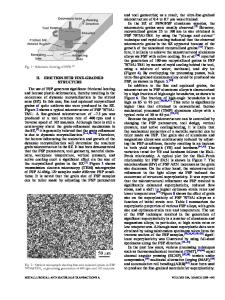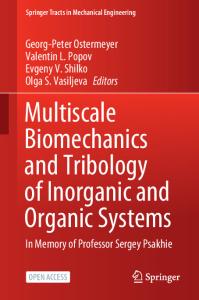Optimizing Powder Distribution in Production of Surface Nano-Composite via Friction Stir Processing
- PDF / 995,214 Bytes
- 6 Pages / 593.972 x 792 pts Page_size
- 48 Downloads / 288 Views
INTRODUCTION
DISPERSION of reinforcement’s particles on metallic substrate to produce metal matrix composite with proper distribution has always been difficult to achieve. Recently, much interest has been shown to a new surface modification technique called friction stir processing (FSP).[1,2] FSP is a solid state processing technique used to obtain a fine-grained microstructure. This process is carried out applying the same method as friction stir welding (FSW), in which a nonconsumable rotating tool with a particular pin’s and shoulder’s designation is plunged into the interface between two plates to be joined and traversed along the line of the joint. Localized heating is produced as a result of the friction between the rotating tool and the workpiece. In addition, the rotating action of the pin that generates high strains raises the local temperature of the material to the range when it can be plastically deformed. As the rotating tool traverses along the joint line, metal is essentially extruded around the tool before being forged by the large down pressure.[3,4] Although FSP has typically been used as a grain refinement technique, it can be readily used for fabricating surface composites. Localized heating that softens and plasticizes the workpiece makes embedding of powder in the substrate ARASH HEYDARIAN, MSc Graduate, and TAYMOR SLAMKISH, Assistant Professor, are with the Mining and Metallurgical Engineering Department, Amirkabir University of Technology, Tehran, Iran. Contact e-mail: [email protected] KAMRAN DEHGHANI, Associate Professor, is with the Mining and Metallurgical Engineering Department, Amirkabir University of Technology, and also with the Center of Excellence in Smart Structures and Dynamic Systems, Amirkabir University of Technology. Manuscript submitted April 19, 2013. Article published online March 5, 2014. METALLURGICAL AND MATERIALS TRANSACTIONS B
possible.[4] Fabricating of reinforcement particle in the Al matrix has been reported by Mishra et al.[5] In this way SiC powder was added into a small amount of methanol and mixed, and then it was applied to the surface of Al plates to form a thin layer of SiC particle. The coated aluminum plates were then subjected to FSP. By applying this method, Mishra et al.[5] managed to increase the hardness of AA5083 to 173 HV, almost double that of the AA5083 substrate (85HV). In another method, some researchers[6,7] produced the composite by machining out a groove and inserted powder into it. Shafiei-Zarghani et al.[6] fabricated Al/ Al2O3 surface composite by FSP and indicated that wear resistance in the nano-composite surfaced Al was significantly been improved. Wang et al.[7] demonstrated a successful fabrication of bulk composites via FSP by incorporating SiC particles on aluminum matrix, which increases microharness 10% higher than the base metal. By encasing multiwall carbon nanotubes (MWCNTs) in a groove in the lower plate that was covered by a top sheet and then subjected to FSP, Morisada et al.[8] tried to study the effect of tool rotatio
Data Loading...











